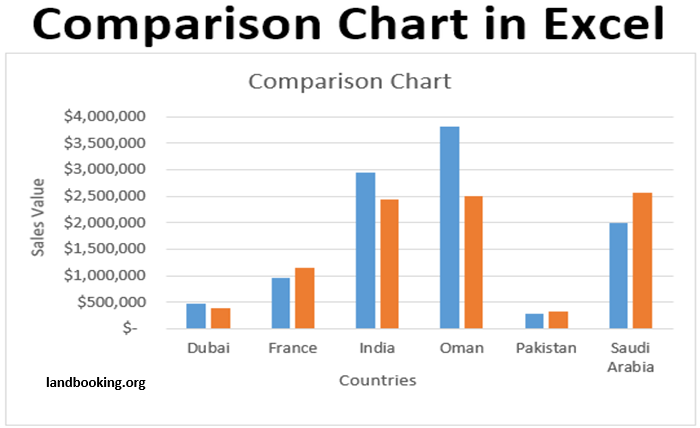Choosing the Right Chart for Comparing Sales Performance of Two Products

Selecting the appropriate chart is essential for comparing two items’ sales performance in an efficient manner. With the help of a well-designed chart, you can see trends, spot patterns, and learn important things about your sales data. This blog article will examine many chart types that are appropriate for comparing product sales and point you in the direction of the best choice for your particular requirements.
Recognizing Your Data
Take a minute to comprehend your facts before delving into certain charts. Are you comparing sales over a period of time, between geographies, or based on the demographics of your customers? Knowing this will assist you in selecting a chart that successfully draws attention to the points of comparison.
Top Runners in Sales Performance Comparison
The following are a few popular and useful chart formats for contrasting two items’ sales performance:
Line Chart: When it comes to displaying trends over time, a line chart shines. It is perfect for determining seasonal trends or the effectiveness of marketing efforts since it lets you see how sales of each product have changed over a given time period.
Bar Chart: When comparing sales at a certain period in time, bar charts are a traditional option. They make it simple to compare sales numbers for each product by giving them a clear visual representation.
Stacked Bar Chart: By stacking the sales numbers for every product on top of one another, a stacked bar chart improves on a standard bar chart. This helps to visualize the overall sales volume as well as the relative contributions of each product.
Selecting the Correct Chart: A Few Things to Think About
Timescale: Are we comparing sales over a shorter time period (weekly, monthly) or a longer time period (yearly)? Bar charts can handle both short and long durations well, whereas line charts work better for longer timescales.
Data Complexity: A line chart may get cluttered if you’re comparing a lot of data points. For improved readability in such circumstances, think about using a bar chart or investigating variants such as clustered bar charts.
Emphasizing Values or Trends: Should you concentrate on a single sales statistic at a given time or highlight trends over time? Bar charts are good for displaying values, but line charts are best for patterns.
Above and Beyond: Sophisticated Choices
Take a look at these chart types for more intricate comparisons:
Similar to a line chart, an area chart adds color to the space underneath the line. This might help to visually highlight how the two products’ sales volumes differ from one another.
To create a bullet chart that presents a clear comparison, use a bar chart and reference lines. It’s a useful choice when showcasing performance benchmarks or sales targets, in addition to actual sales numbers.
In summary
The best chart to compare sales performance will depend on your unique data and objectives. You comprehending your data, taking into account the previously mentioned elements, and experimenting with various chart styles, you may select the illustration that most effectively conveys your sales comparison.
FAQs
1. Is it possible to compare sales success using a pie chart?
Pie charts generally don’t work well when comparing two sets of data. They work best when displaying ratios inside a single dataset.
2. What happens if I wish to compare sales of several different products?
Consider using stacked or clustered bar charts when comparing more than two goods. They make it possible to visualize several data points more clearly.
3. Can I make these charts with the use of any internet tools?
You can generate charts with a variety of spreadsheet programs and online data visualization tools. Canva, Microsoft Excel, and Google Sheets are a few well-liked choices.
4. How can I add even more information to my charts?
Make sure your charts include legible titles, labels, and legends. You can also use annotations to highlight specific patterns or data points.
Is there a single chart that is considered “best” for all sales comparisons?
There isn’t a solution that works for everyone. Your data and the message you wish to convey will determine which graphic is ideal. When selecting the appropriate chart, take into account your target audience and the main point you wish to make.




